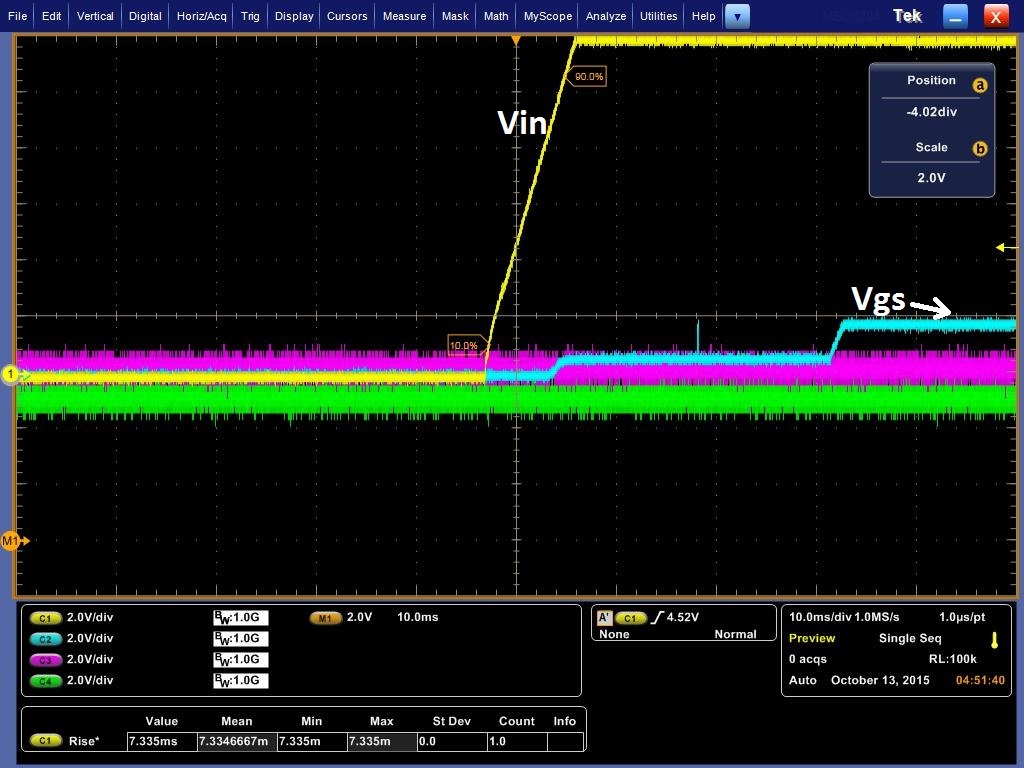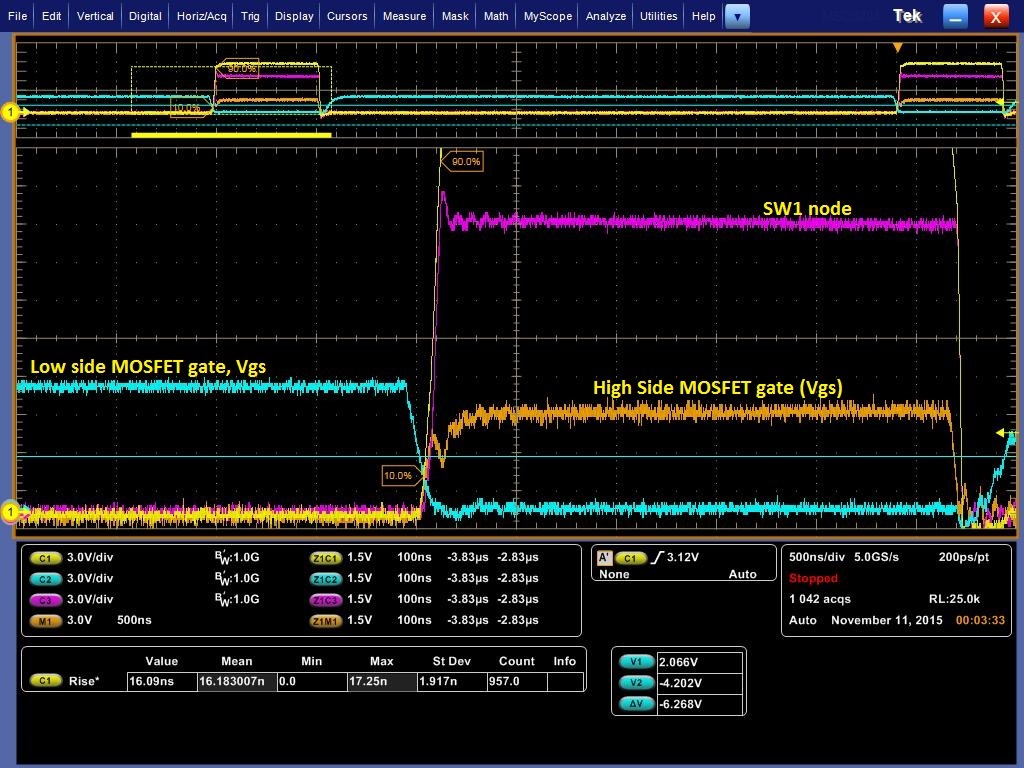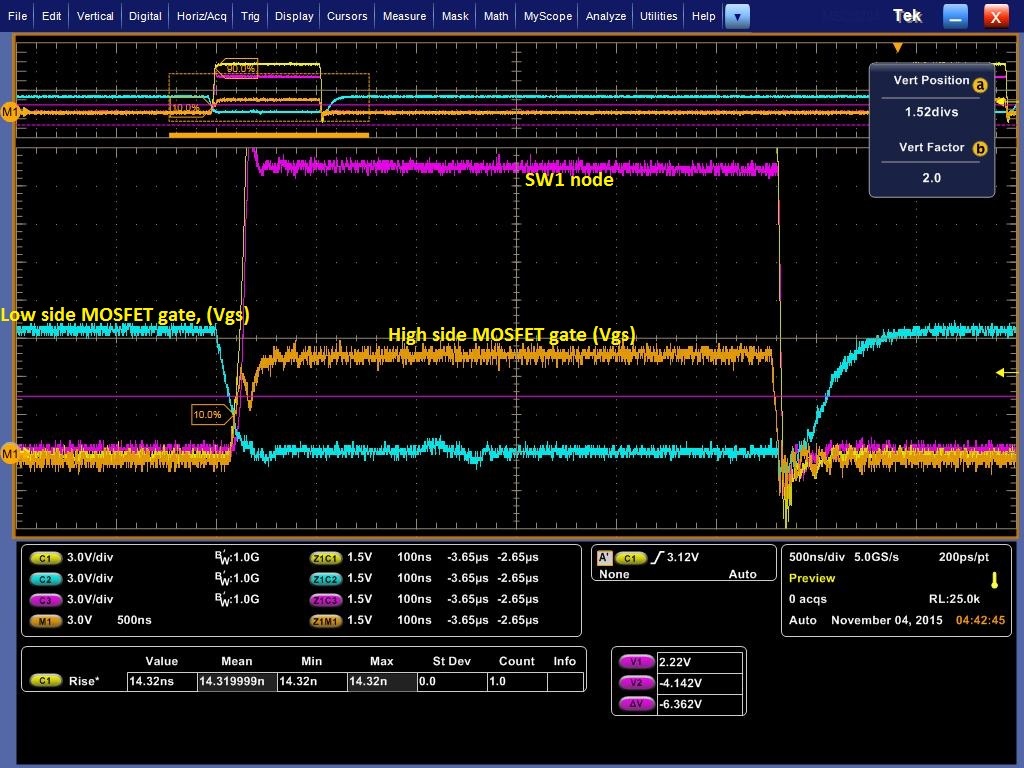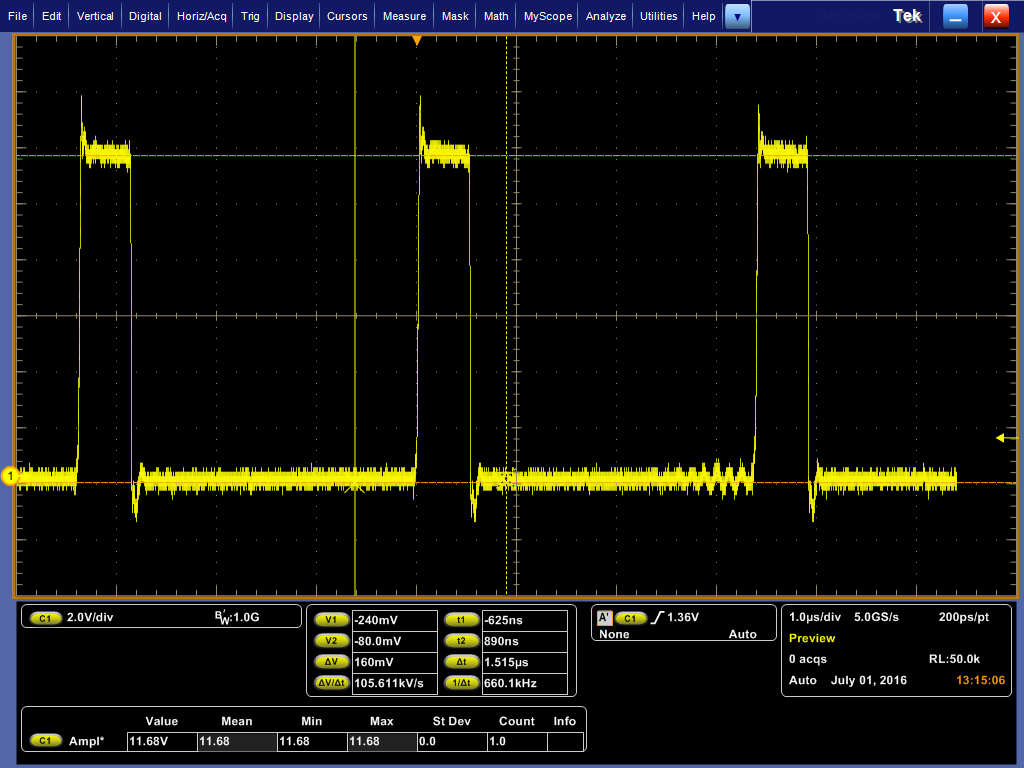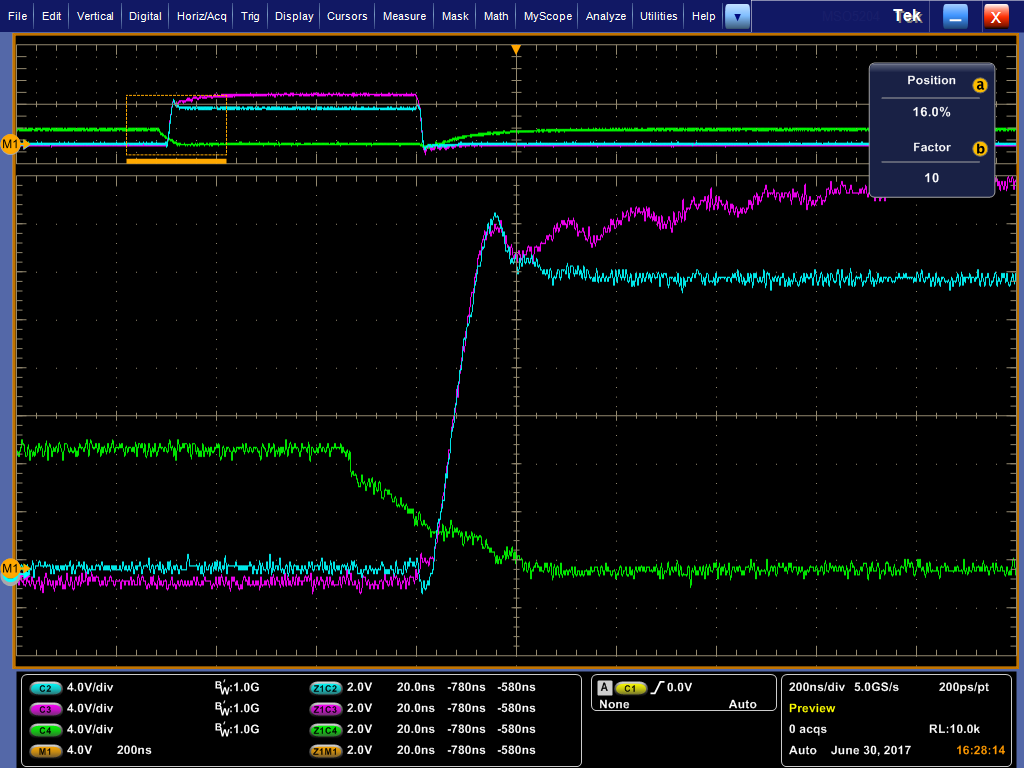We are using TPS40140 for converting 12V to 1V8 (1.8V).
It has been observed that the MOSFET used (IRFH7914) is burning after board is powered on and is working for few days and as a result a 12V to GND short is observed.
There is gate series resistor (10 ohms) for each MOSFET.
To debug this issue , we have probed few nodes in the circuit(High side MOSFET gate to source,Low side MOSFET gate to source,SW1 node,High side MOSFET gate w.r.t ground).The schematics and waveforms are attached.
1)We are able to see an overlap of High side MOSFET gate to source and Low side MOSFET gate to source waveforms when Low side is switched OFF and High side is switched ON.Whether this will cause cross conduction and whether this is the reason for MOSFET going bad?
2)whether replacing gate resistor by 0 ohm will result in faster turn OFF of low side and may solve above issue?But this will result in faster turn on also.please suggest how to solve this issue?
3)We also observed some gate voltage(around 1V) during start up.The waveform for the same is attached.Whether this also can cause MOSFET to go bad?Whether any pull down resistor(between gate and source) for each MOSFET is required to solve this issue?




